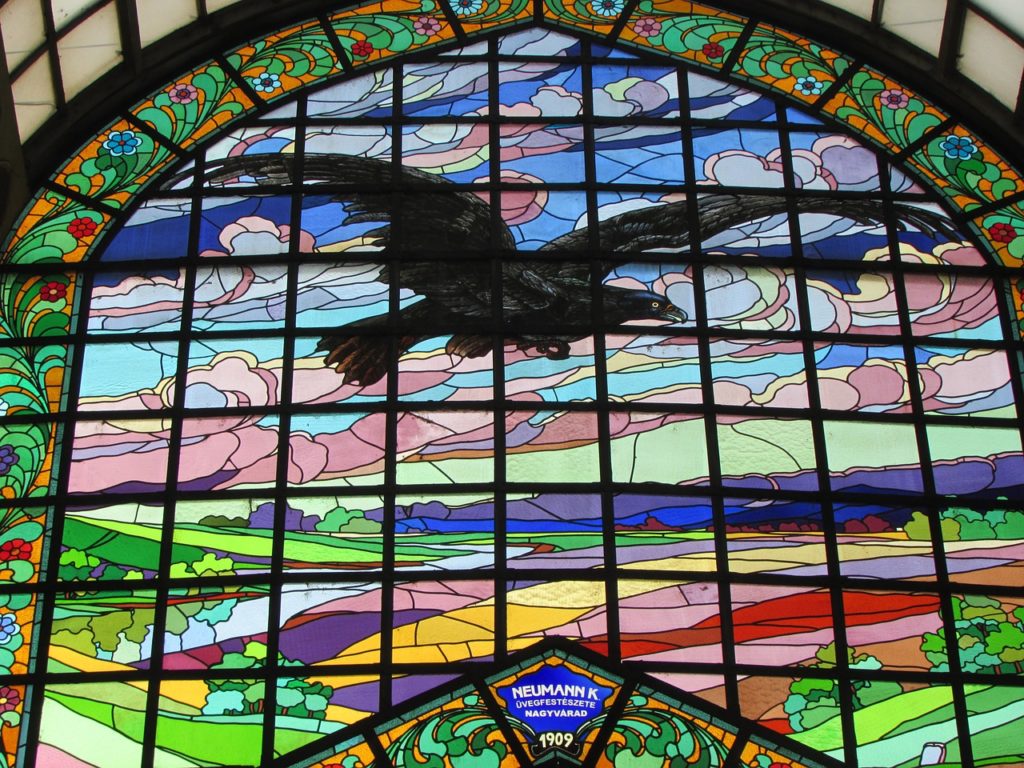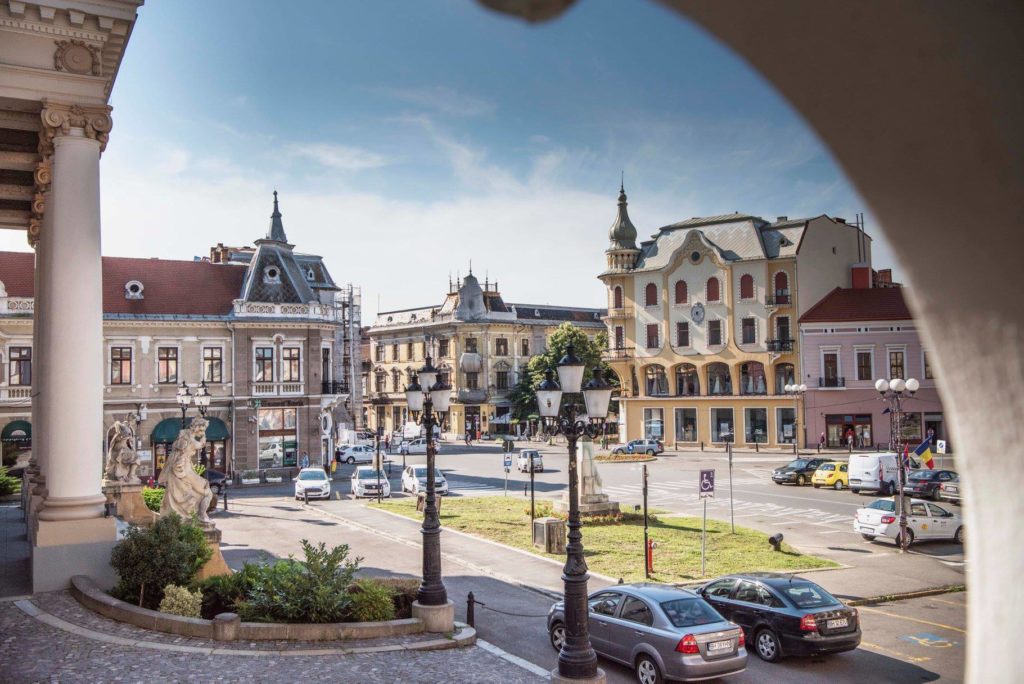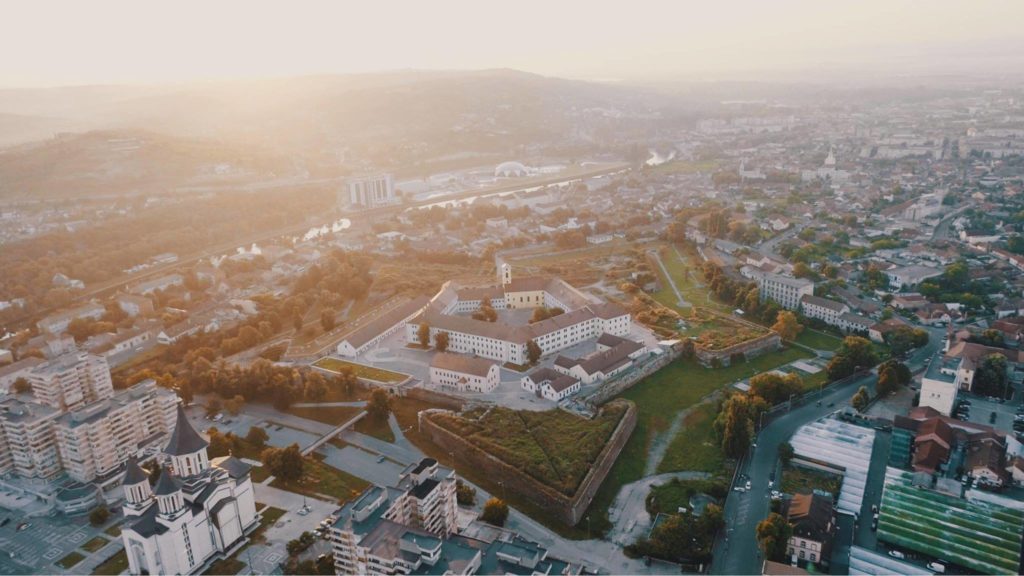Romania travel: Five reasons to visit Oradea

Oradea has been identified as the country’s greenest city, safest city and one of its smart cities. On the traveling side, Oradea’s charms await those who venture to the far northwestern part of Romania: picturesque streets filled with architectural stunners and centuries of history.
The Art Nouveau heritage & many historical monuments
Oradea’s architectural heritage is impressive and it earned the city the inclusion in European Art Nouveau Network, alongside cities such as Budapest, Barcelona or Vienna. Many of the buildings have been refurbished recently, and travelers have plenty to add to their to-visit list.
Many of these edifices are palaces, built around 1900 by architects who were graduates of the Polytechnic School of Budapest. They display various influences, from the Romantic style of Hungarian architect Odön Lechner and the avant-garde Viennese school to the Lilien style born in Berlin or the “Coup de fouet” movement of the French school.
The Black Eagle Palace is a Secession style architectural accomplishment in the city. It was designed to house a theater, ballrooms, a casino, offices and more. Today, it is one of the city’s top get-together places and hosts many cafes and restaurants.
 Black Eagle Palace detail Photo: Pixabay.com
Black Eagle Palace detail Photo: Pixabay.comFurthermore, the Town Hall Palace, the Palace of Justice, the Apollo Palace, the Stern Palace, and the Moskovits Palace are other highlights in the city. The Darvas-La Roche Villa, adorned with numerous Viennese elements, is currently under refurbishment, and is set to host Oradea’s Art Nouveau Museum.
The Oradea Fortress is one of the landmark sites of Oradea, and throughout its almost 1,000-year-old history it played an important military and cultural role. It was a residence for the Roman-Catholic Diocese of Oradea (1092 – 1557) and a military fortress from the 16th to the 19th century, governed by various successive administrations: Hungarian/Transylvanian (1092 – 1660), Ottoman (1660-1692), and Hapsburg (1692 – 1918).
To get an overview of Oradea visitors can climb to the City Hall Tower. The tower has four main levels, three of which for panorama purposes. The first level hosts a clock that plays the “March of Iancu” every hour - one of the city's trademarks.
A multicultural legacy
Oradea has been a diverse city since the Middle Ages, having been inhabited by Hungarians, Italians, Germans, Jews, Gypsies, or Slovaks, each leaving their cultural mark. To discover more of the area’s history, travelers can stop by the Țara Crișurilor Museum or several of the memorial houses in town, such as the ones of Aurel Lazar, a participant in the 1918 Union, Iosif Vulcan, the founder of the Familia magazine, which published the first poems of Romanian poet Mihai Eminescu, or the museum dedicated to the Hungarian poet Ady Endre.
Another way to get acquainted with the diversity of the city is its rich ecclesiastical architecture. The Ursuline Convent, the Capuchin Monastery and Church, the Roman Catholic Cathedral, the Lutheran Evangelical Church, the Calvinist Reformed Church, and the Moon Church, with its mechanism indicating the moon phases, are several on a longer list of religious sites in Oradea. Furthermore, the Zion Neolog Synagogue and the recently inaugurated Orthodox Synagogue speak of the city’s significant Jewish population at the turn of the 20th century.
Beautiful parks and public squares
In 2011, Oradea had 25 sqm of green space for each resident, one of the reasons for it being named Romania’s Green Capital that year.
The city’s first public parks, namely the Rhedey Garden and the current Petöfi Park, were established in the 19th century. Now, Oradea has almost 20. Among them, the park of the Baroque Palace encompasses a wide variety of species as well as sequoia gigantaea trees that are over 100 years old. The banks of the Crișul Repede river, which cuts through the city, also offer many green areas.
 A corner of Ferdinand Square in Oradea. Photo: Oradea Heritage Facebook Page
A corner of Ferdinand Square in Oradea. Photo: Oradea Heritage Facebook PageAt the same time, two of the city’s squares can serve as starting points for exploring the city. The Union Square area gathers the Town Hall and the Greek Catholic Bishop Palace. The eclectic Ferdinand Square is where the Regina Maria National Theater was built in 1900. The Levay Palace and the Poynar Palace are also to be found in the perimeter of the square.
Year-round events and exhibitions
The Museum of the City of Oradea, hosted in the Oradea Fortress, hosts several permanent exhibitions covering the history of the site but also the history of the Reformed Church and of the Greek-Catholic Episcopate in Oradea, the history of Oradea photography, the “Resistance and Repression in Bihor” Memorial, and one presenting the bakery of the fortress. Some of the temporary exhibitions open this fall present Dacian and Roman items and documents and memorabilia related to the 1918 Union. The exhibitions are listed here.
 Oradea Fortress. Photo: Cetatea Oradea Facebook Page
Oradea Fortress. Photo: Cetatea Oradea Facebook PageThe Art section of the Țara Crișurilor Museum has in its collection works of Romanian artists Theodor Pallady, Gheorghe Petraşcu, Iosif Iser, Jean Alexandru Steriadi, Nicolae Tonitza, and Victor Brauner but also of Flemish, German, Austrian and Italian school artists from the 15th to the 19th centuries. The current exhibitions are listed here. The museum also has an Archaeology section, presenting local discoveries but also ancient Egyptian items and a collection of painted ancient Greek pots, a History section, including a collection of historical maps, and Nature Sciences and Ethnography sections.
A long-standing event in the city is called Toamna Orădeană (The Oradea Fall), scheduled this year for the beginning of October. It’s been running since 1991 and covers numerous concerts, theater performances, and events for children, among others. The Debrecen Flower Carnival stops in Oradea, where Transilvania International Film Festival (TIFF) also runs a local edition. A new addition to the city’s agenda this year is the ORA Jazz festival, taking place between September 14 and September 16, and co-organized by the same team in charge with the Gărâna Jazz Festival and the Timișoara Jazz Festival.
The nearby mineral springs
Oradea sits less than 10 km away from the thermal spa resorts of Băile Felix and 1 Mai, known in the country for their mineral springs. Băile Felix have been known as a resort since the second part of the 19th century. Today, after various investments tourists can find facilities offering both thermal and wellness & spa treatments.
How to get there:
Oradea is located close to the border with Hungary, 543 km away from Bucharest taking the DN76/ E79 and 155 km from Cluj-Napoca via DN1/E60. By train, a trip from Bucharest to Oradea can take as much as 13 hours, so air travel remains the faster option if coming from the southern part of the country. Travelers arrive in the city at the Oradea International Airport, one of the fastest growing in Europe in its category last year, and where works at a second terminal are underway. Tarom and Blue Air currently connect the capital to the northwestern Romania city.
editor@romania-insider.com
(Opening photo: Pixabay.com)












